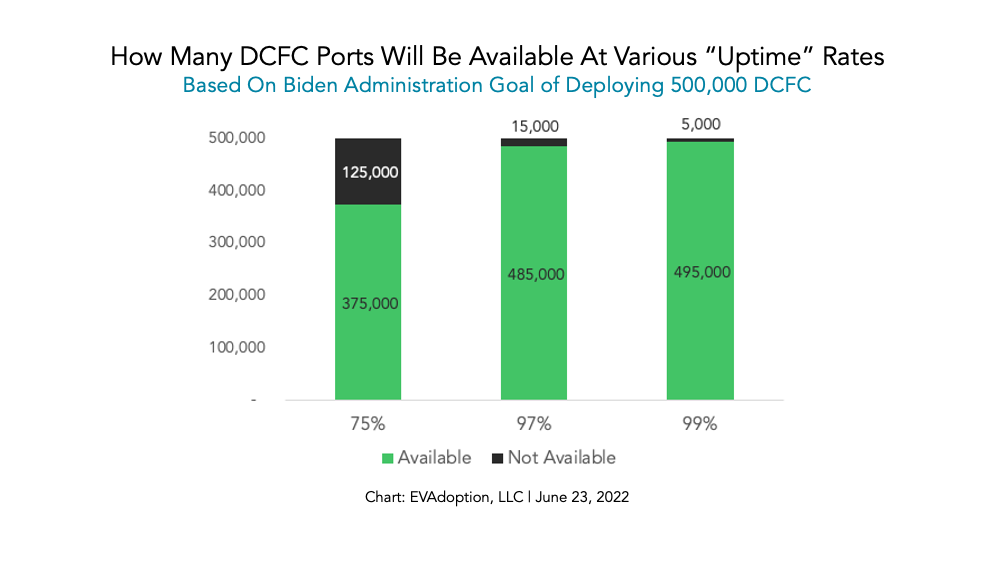One of the hottest topics in the EV charging space in recent months is the concept of “uptime” — especially as it relates to public DC fast chargers deployed by the national and regional charging networks and charge point operators.
The subject has become a hot topic due to legions of social media posts showing non-working chargers, news articles, the recent UC Berkeley reliability study, char point operators (CPOs) claiming they have the highest uptime in the industry (usually claiming 96% or 97%), and the DOT/DOE/FHWA proposed requirement of 97% average annual uptime for charging locations funded by the National Electric Vehicle Infrastructure (NEVI) program.
So I did the math and created the chart below that shows how many DC fast chargers would not be available at any given time based on the Biden administration’s goal to deploy 500,000 chargers by 2030 and the NEVI requirement of 97% average annual uptime. But I added 99% to show the difference and what should be the goal; and 75% based on the recent UC Berkeley study findings.

As you can see, at 97% uptime, on any given day, in theory 15,000 DC fast chargers out of the proposed 500,000 might not be available in 2030. As an industry, we must do better.
While we don’t yet have an industry standard definition of “uptime” — EV drivers don’t care about the “uptime” definition, the only thing that matters to them is: “Can I charge?”
Today EV charger deployment is a gold rush, but in the coming years hopefully the “rising tide” of competition and accountability will “lift all of the EV charging boats.”
